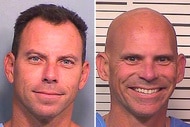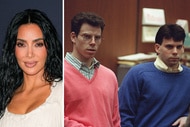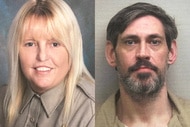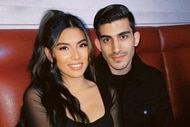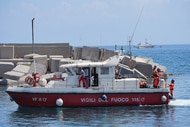Create a free profile to get unlimited access to exclusive videos, breaking news, sweepstakes, and more!
Robert Durst Found Friend’s Dead Body But ‘Panicked,’ Later Wrote Anonymous Letter To Cops, Lawyer Says During Trial
"Bob Durst did not kill Susan Berman, and he doesn't know who did," attorney Dick DeGuerin told jurors in the opening statements of the trial Tuesday, while also announcing that Durst will take the stand.

Robert Durst's defense lawyer said Tuesday that the multimillionaire real estate heir found the body of the friend he is charged with killing, and told jurors that Durst will testify at his trial.
It was the first time defense attorneys have publicly said Durst discovered the body of Susan Berman, his best friend who was fatally shot in her home is 2000, and the first time they have even conceded that he was in the Los Angeles area at the time.
"Bob Durst did not kill Susan Berman, and he doesn't know who did," attorney Dick DeGuerin told jurors at the beginning of his opening statement. "He did find her body, shortly after someone had shot her in the back of the head."
The admission offered the first glimpse at the planned defense for Durst, though his attorneys had signaled they would take the approach during the run-up to trial, when they conceded that Durst mailed a note to authorities with only Berman's address and the word "cadaver" written in capital letters. Durst had long denied sending the letter.
"When Bob showed up and found her dead, he panicked," DeGuerin said. "He wrote the anonymous letter, so her body would be found, and he ran. He's run away all his life."
DeGuerin then shifted to the death soon after in Galveston, Texas, of Morris Black and the last time he represented Durst and put him on the stand, something he told jurors he would do again in the Berman trial.
"Bob Durst is going to testify," DeGuerin said Tuesday, stunning his courtroom audience.
Having the defendant take the stand and be subjected to cross-examination at a murder trial is considered risky. In the case of Durst, whose candid, say-anything style was on display in clips from police and television interviews during the prosecution's opening statement, it would seem to be especially ill-advised.
But it worked the first time. Durst was acquitted in the 2003 Texas trial, where he testified that he had dismembered and disposed of Black's body after Black was accidentally shot during a struggle.
DeGuerin said Tuesday that Black's dismemberment was the "elephant in the room" that threatens to overwhelm all the other evidence.
"There was a dead man on the floor of his apartment. And that man had been shot with his gun. And he decided that the police would never believe him. So he decided he had to get rid of the body," DeGuerin said. "Bob doesn't make good decisions."
The prosecution, whose three-day opening statement ended Monday, is being permitted to allege in this case that Durst deliberately killed Black because Black had learned that Durst, who was disguising himself as a woman, was in fact a wealthy real estate heir who was on the run.
The prosecution is also allowed to allege that Durst killed his wife, Kathie, whose 1982 disappearance has brought him decades of suspicion and media attention, because they say Durst had confided that he had killed his wife to Berman, who had helped him cover it up. Durst denies having anything to do with the New York disappearance of his wife, who has since been declared dead despite no body being found.
Another Durst attorney, David Chesnoff, emphasized to the jury that the prosecution's case was entirely circumstantial.
"There is no forensic evidence whatsoever linking Bob to Mrs. Durst's disappearance, or more importantly to Miss Berman's killing," Chesnoff said, then repeated a line he used throughout his presentation to declare Durst's innocence. "Absence of evidence is evidence."
Police and prosecutors for years have tried without success to place Durst in Los Angeles at the time of Berman's killing. On Tuesday, the defense declared openly that he was there.
Durst's attorneys told jurors that he had flown to Northern California in December 2000, and from there he drove to Bakersfield in central California, where he called Berman and planned to meet her and have breakfast at a Los Angeles cafe the following morning, the day Berman would be killed.
Chesnoff said Durst had a key to Berman's apartment, used it to enter her home, found her dead, and ran out of the house because he thought the killer might still be inside.
Chesnoff said Durst was left in an impossible situation where he knew he would be a suspect.
"Here we go again," Chesnoff told jurors. "Since 1982 without any evidence whatsoever, he's been blamed for the disappearance of his wife."
Chesnoff said Durst fled back to San Francisco, where he and Berman had planned to go together, but before that, "he decided to mail a letter to police with the word 'cadaver' on it, hoping that alone would lead police to the residence."
Witness testimony at the trial begins Wednesday.




